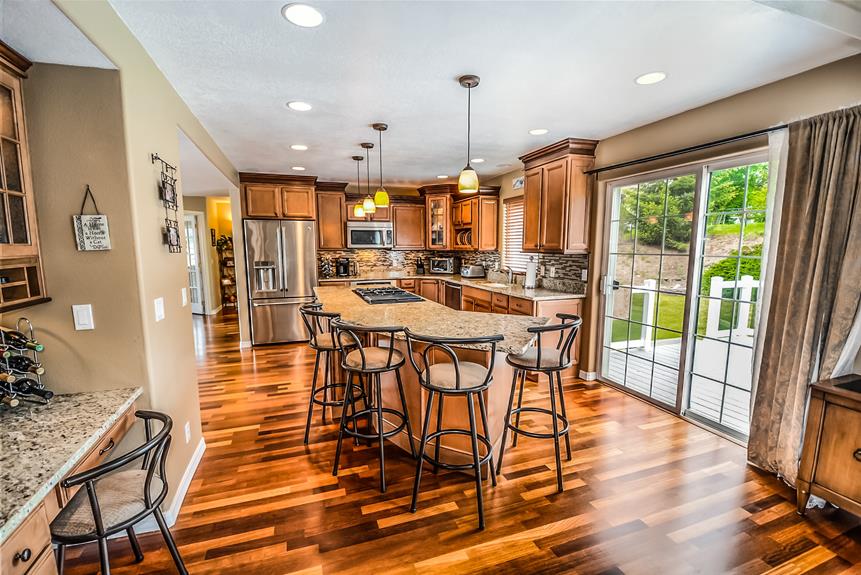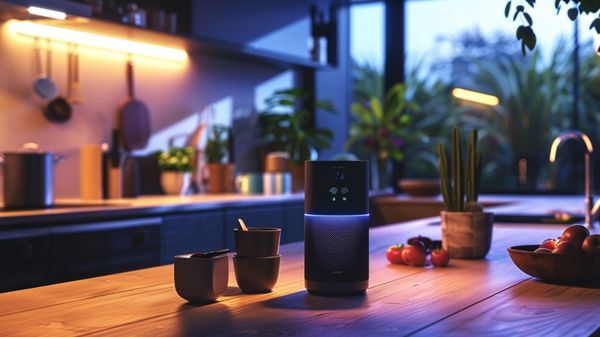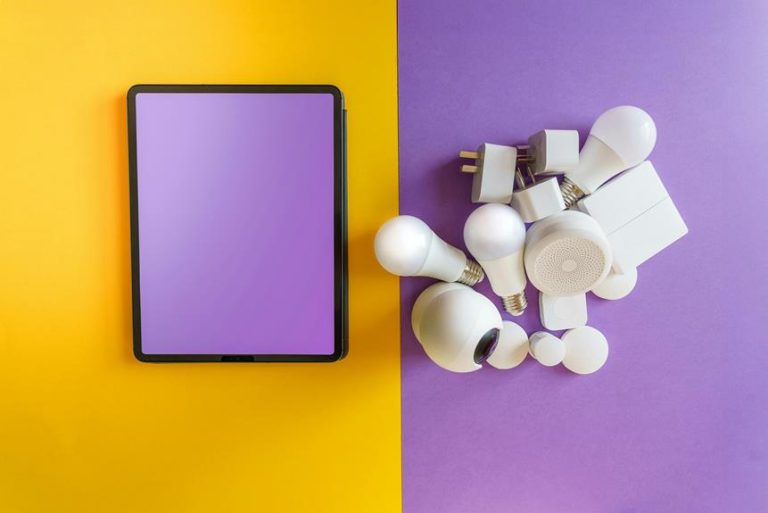Are your utility bills through the roof and your lighting fixtures stuck in the Stone Age? We felt the same way, so we took matters into our own hands and revamped our home lighting for maximum efficiency.
In this article, we’ll share our enlightening journey and the valuable insights we gained along the way. From the demise of incandescent bulbs to the wonders of eco-friendly alternatives, we’ll show you how to create a brighter, greener future.
Let’s shed some light on this!
The Problem With Incandescent Bulbs
Incandescent bulbs are commonly used in households, but they’re one of the least energy-efficient options available. So, what’s the problem with these bulbs?
Well, for starters, they use a small coil or tungsten filament that glows when electricity flows through it. This process generates a lot of heat, wasting energy and driving up your utility bills.
But fear not! There are better alternatives out there, such as LED bulbs. LED bulbs aren’t only more energy-efficient, but they also last up to 25 times longer than incandescent bulbs. Although they may be a bit pricier upfront, the benefits of switching to LED bulbs far outweigh the costs.
Plus, there are other energy-saving options like halogen incandescent bulbs and compact fluorescent lamps (CFLs) that offer significant savings.
Choose Eco-Friendly Bulbs
Now let’s delve into the topic of choosing eco-friendly bulbs, as they offer a more efficient and cost-effective alternative to outdated incandescent bulbs. Here are three important points to consider:
Dimmable options:
When choosing eco-friendly bulbs, look for dimmable options. These bulbs allow you to adjust the brightness according to your needs, saving even more energy. Plus, dimming the lights can create a cozy and relaxing atmosphere in your home.
Recycling CFLs:
Compact fluorescent lamps (CFLs) are an eco-friendly choice, but they contain a small amount of mercury. It’s crucial to recycle CFLs properly to prevent mercury from entering the environment. Many hardware stores and recycling centers offer CFL recycling programs, so be sure to take advantage of these services.
Choose LED bulbs:
LED bulbs are the most energy-efficient option available. Although they may be more expensive upfront, they last significantly longer and save you money in the long run. LEDs are also dimmable and don’t contain any hazardous materials, making them a safe and eco-friendly choice for your home.
How Fixtures Make a Difference
Choosing newer fixtures can have a significant impact on the efficiency of your home lighting. Energy efficient fixtures are designed to maximize the distribution of light, making sure that every corner of your room is well-lit. These fixtures use advanced reflectors to direct light where it’s needed most, reducing wasted energy.
One way to identify energy efficient fixtures is by looking for the Energy Star label. The Energy Star label guarantees that the fixture meets strict energy efficiency guidelines set by the Environmental Protection Agency. By choosing Energy Star fixtures, you can save even more on your energy bills and reduce your carbon footprint.
There are many manufacturers and brands that offer Energy Star fixtures, such as Access, American Fluorescent, and Craftmade. Additionally, you may be eligible for rebates when purchasing qualifying Energy Star fixtures. Check the Energy Star website for more information.
Upgrading your fixtures is a quick and easy way to revamp your home lighting and improve energy efficiency. So why not make the switch and brighten up your home while saving money and the environment?
Quick Shade and Dimmer Upgrades
To further improve the efficiency of your home lighting, let’s explore some quick upgrades you can make to your shades and dimmers. Also, bringing more natural light into your home can instantly elevate comfort and reduce the need for artificial lighting. In this regard, it can be helpful to explore ideas like getting more natural light at home, which can highlight simple adjustments that make your lighting setup more efficient and pleasant. Here are three options to consider:
- Upgrading Lampshades: Replace your current lampshades with more translucent ones. This allows more light to pass through, brightening up your space without the need for additional bulbs. Plus, it adds a touch of style to your home decor. Think of it as giving your lamps a fashionable makeover!
- Adjusting Bulb Brightness: Install dimmer switches and adjust the brightness of your bulbs. This way, you can customize the lighting to suit your needs and save energy in the process. Dimming the lights not only creates a cozy atmosphere but also extends the lifespan of your bulbs. It’s like hitting two birds with one stone, but in a much kinder and energy-efficient way!
- Compatibility Considerations: Keep in mind that different types of bulbs may require specific dimmer switches. LED bulbs, for example, often require dimmers designed specifically for LED lighting. So, make sure to do your research and choose the right dimmer for your bulbs. After all, we wouldn’t want your lights to be dimmer than your wit!
Impact of Upgrading Primary Lights
When upgrading primary lights in our homes, we can experience a significant impact on energy efficiency and overall lighting quality. By replacing outdated bulbs with energy-efficient options like LEDs or CFLs, we can reduce our energy consumption and enjoy long-term cost savings.
These bulbs use significantly less energy than traditional incandescent bulbs, and they last much longer too. However, if common lighting problems occur, one can consult online resources for troubleshooting (such as this one: pm247.co.uk/blog/how-to-fix-flickering-lights/); alternatively, they can also hire a professional to ensure the work is done safely and effectively.
Additionally, choosing newer fixtures with efficient reflectors can further enhance energy efficiency and save money. Energy Star offers a list of residential fixture types that qualify for their label, and many manufacturers offer Energy Star fixtures.
Best Energy-Saving Bulbs Overview
As we continue our discussion on upgrading primary lights for maximum efficiency, it’s important to consider the best energy-saving bulbs for your home. Here are three options to consider:
- LED bulbs: These are the superheroes of energy-saving bulbs. They’re incredibly efficient, saving you money on your electricity bill. Plus, they last a long time, so you won’t have to change them as often. However, be aware that LED bulbs can be a bit pricey upfront.
- CFL bulbs: If you’re looking for a more affordable option, CFL bulbs are a great choice. They use less energy than traditional incandescent bulbs and last longer. Just keep in mind that they take a little time to reach full brightness and may not be dimmable. Also, make sure to recycle CFL bulbs properly, as they contain a small amount of mercury.
- Halogen bulbs: While not as energy-efficient as LED or CFL bulbs, halogen bulbs are still a step up from incandescent bulbs. They’re brighter and have a longer lifespan. Just be prepared to pay a bit more for the energy they consume.
Considerations for LED Bulbs
Now let’s delve into the considerations for LED bulbs, as they’re the most energy-efficient option available.
When choosing LED bulbs, it’s important to consider their compatibility with enclosed fixtures. Some LED bulbs may not be suitable for use in enclosed fixtures, so be sure to check the packaging or consult the manufacturer’s guidelines.
Additionally, if you’re currently using CFLs and looking to make the switch to LEDs, it’s important to properly recycle your old CFL bulbs. CFLs contain a small amount of mercury, so they shouldn’t be thrown in the regular trash. Many hardware stores and recycling centers offer CFL recycling services, making it easy and convenient to dispose of them responsibly.
Cheaper Alternatives: CFL Bulbs
For a more affordable option, we can consider using CFL bulbs as a cheaper alternative for home lighting. CFL stands for compact fluorescent lamp, and these bulbs offer energy efficiency at a lower cost than LED bulbs.
Here are three reasons why CFL bulbs are a great choice:
- Energy efficiency: CFL bulbs use 75% less energy than traditional incandescent bulbs. This means you’ll save money on your utility bills while reducing your carbon footprint.
- Long lifespan: CFL bulbs last up to 10 times longer than incandescent bulbs, which means less frequent replacements and more savings in the long run.
- Recycling options: CFL bulbs contain a small amount of mercury and need to be recycled properly. Many hardware stores and recycling centers offer CFL bulb recycling programs, making it easy to dispose of them responsibly.
Halogen Lights: Costly and Short-Lived
Halogen lights prove to be expensive to operate and have a shorter lifespan compared to other energy-saving options. While they may provide bright and focused light, their drawbacks outweigh the benefits.
Firstly, their energy consumption and high operating costs make them an inefficient choice. Additionally, halogen lights have a shorter lifespan, meaning they need to be replaced more frequently, resulting in additional expenses.
Moreover, their environmental impact shouldn’t be ignored. Halogen lights emit more heat than other energy-saving options, contributing to increased energy consumption and greenhouse gas emissions.
Furthermore, finding compatible fixtures for halogen lights can be a challenge, as not all fixtures are designed to accommodate them.
Considering these factors, it’s advisable to explore alternative options such as LED or CFL bulbs, which offer greater energy efficiency and longer lifespans.
Conclusion
Revamping your home lighting for maximum efficiency is a practical and cost-effective way to reduce energy consumption and lower utility bills. While the initial investment may seem daunting, the long-term benefits of eco-friendly bulbs and efficient fixtures far outweigh the higher price. By making these small changes, you can create a brighter, greener future for your home and enjoy the cost savings and environmental impact that come with it.




